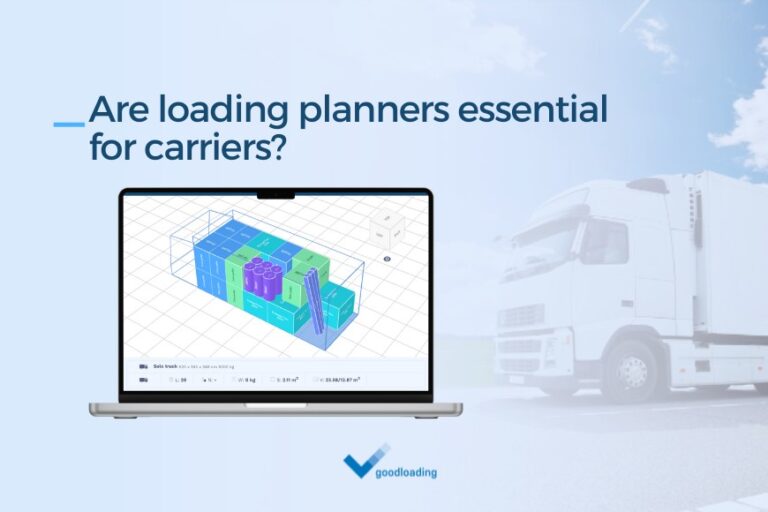Although transport companies do not directly deal with the planning of loading and the distribution of goods in the cargo space, they must determine whether they have a fleet for a given order, provide a rate for the order or plan a route to several unloading places. Optimizing the entire process can translate not only into increased transport safety, but also into generating greater profits and increasing competitive advantage.
Adjustment of the fleet to the order
Carriers with fleets consisting of one vehicle type must carefully determine whether their fleets are suitable for a particular order, especially with specific loading requirements. However, when a fleet consists of different types of semi-trailers, carriers need to know which of them can be used to transport a given load. Precise determination of the type and number of suitable vehicles is crucial in deciding whether to accept an order.
Goodloading allows you to quickly check whether a given load can be transported with your vehicle type. It can also recommend another one from the user base, suggesting the most effective solution. The application algorithms help optimize the distribution of goods, so carriers can make the most of the available fleet. What’s more, Goodloading allows you to precisely calculate LDMs (Loading Meters) and free space in your vehicles. This helps carriers to plan exactly how much space the goods will take up and whether there is room to add more loads to make optimal use of the available fleet and minimize costs.
Multiple loading or unloading places
Route planning with multiple loading and unloading places requires precise distribution of goods to avoid downtime and the delays and extra costs associated with it.
The multistop functionality in Goodloading allows you to precisely plan loading, taking into account multiple points along the route. This allows you to accept an order for one semi-trailer from several senders and load it in such a way that unloading goes smoothly.
Communication with contractors
Discrepancies between senders and carriers on the loading method can lead to delays, errors and additional costs. Therefore, clear communication between the carrier and the person responsible for loading is crucial.
Goodloading offers the ability to generate reports and loading plans in PDF and CSV formats. This allows carriers to easily provide the necessary information to the people responsible for loading and customers, which minimizes the risk of errors and misunderstandings. In addition, the application allows you to send links with loading visualization, which facilitates communication and understanding of the loading plan.
GVW and axle load limitations
Carriers need to be sure that their loads do not exceed gross vehicle weights (GVW) and axle loads to avoid damage and penalties, as well as associated costs and delays.
Goodloading offers recommendation functions on the best way to load, taking into account GVW and axle load limitations. The app helps to verify that the load does not exceed the permissible limits, ensuring safe transport.
Are loading planners necessary for carriers?
The answer to this question depends on the specifics of the carrier’s business and the scale of operations. For small transport companies that handle a limited number of orders, traditional planning methods may be sufficient. However, for larger companies that need to manage large volumes of goods and diverse types of loads, the use of a loading planner such as Goodloading becomes crucial when optimizing transport processes.
Loading planners not only increase operational efficiency, but also help build a competitive advantage. Carriers that use modern planning tools can offer more attractive terms of cooperation, which attracts customers and increases the loyalty of existing business partners.
Optimization of cargo space, reduction of the risk of damage, compliance with regulations, time savings and ease of use are just some of the benefits that come with using such tools. Therefore, it can be concluded that loading planners are essential for carriers seeking to increase their efficiency and competitiveness in the transport market.





